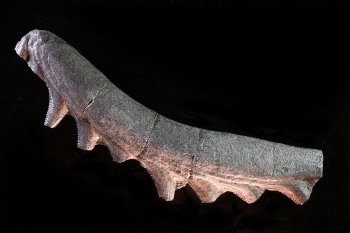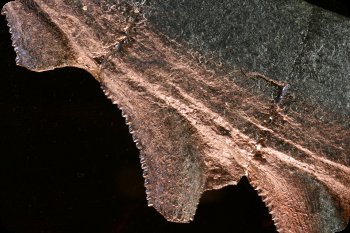Fossil Fish Jaw
Ancient shark relatives from the Pennsylvanian Period evolved some puzzling jaw structures that sometimes curved outward, giving the appearance of two saw blades curving away from each other. That’s why scientists describe them as “tooth whorls.” This unusual arrangement begs the question, “How did Edestus catch and subdue its prey?”
At first scientists surmised the jaws might have been used like scissors to slice prey. However, due to the convex curvature of the jaws, only the back teeth would mesh. This made the “scissors” explanation seem unlikely. So, instead of the jaws closing on prey, scientists now hypothesize that Edestus might have slashed at prey with an up and down movement of the head. Note the serrated edges in the detail photo. Scientists would need to uncover additional evidence in the fossil record to know for sure. Jaws of these 300-million-year-old fish are sometimes found in layers of shale associated with Illinois coal deposits.






